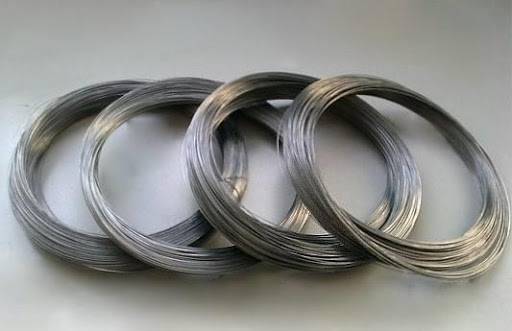As part of the refractory metals group, tungsten is known for having a high melting point and great resistance to heat, corrosion, and pressure. These properties make tungsten metal suitable for a variety of applications – but how is tungsten wire used, in particular?
Everyone knows that the development of brighter, longer-lasting incandescent light bulbs in the late 1800s was thanks to the heat resistance of tungsten filaments. However, there are many more uses for tungsten wires in the modern world.
To form wires, tungsten is extracted from ores and refined through powder metallurgy, then sintered, swaged, and drawn into long thin wires. Tungsten wires can be high purity or alloyed, or doped for increased ductility and durability, but the finished product will typically have a high tensile strength and be an efficient electrical conductor.
Here are 13 examples of tungsten wire applications around the world.
Lighting applications of tungsten wire
As mentioned above, incandescent lamps are one of the most well-known uses of tungsten wire. While technological advancements have somewhat improved their efficiency, incandescent lamps are still frequently replaced with more eco-friendly LED options these days.
That said, you’ll still find tungsten filament light bulbs in use in many places, such as:
1) Vehicle lighting – automobile turn signal lamps.
2) Stage lighting – theatre productions, television and film studios, etc.
3) Outdoor lighting – car parks, arenas and stadiums, etc.
These lamps typically use halogen gas and a compact filaments to concentrate the light, though high intensity discharge (HID) lamps are used in large venues where a higher wattage is required.
Iodine tungsten lamps with inert gas can also still be found in various public spaces, as well as factories, cinema stages, and other buildings that need bright heat-resistant light bulbs.
Industrial applications of tungsten wire
Its strength and resistance to deforming in high temperatures make tungsten wire ideal for many industrial applications, where the equipment has to function in very challenging environments. Industrial uses of tungsten wire include:
4) Furnaces – weight-bearing supports in industrial ovens (e.g. woven mats or helical springs).
5) Probes – semiconductor test probes for integrated circuits during silicon wafer manufacture.
6) Electrodes – for electrical discharge machining (EDM) and tungsten inert gas (TIG) welding.
7) Deposition – heat-resistant coatings for electron emitters, borescopes, thermocouples, etc.
Low thermal expansion means that tungsten helps a variety of weaker materials to retain their shapes and functions even in extremely hot environments, which frequently occur in production, testing, and manufacturing.
Medical applications of tungsten wire
Tungsten wire’s high density, hardness, tensile strength, and low vapour pressure also make this material useful in many medical applications that require rigid yet steerable elements that are also biocompatible, or assistance with radiation shielding for diagnostics. These include:
8) Surgical robotics – cables for stability and accuracy during electrosurgery and electrocautery.
9) Imaging systems – collimators and radiation shields for X-ray, CT, SPECT, MR, etc.
10) Medical devices – guide wires, probes, electrodes, instruments and instrument tips, etc.
Tungsten wire is an essential material in many medical fields, but can be especially helpful in oncology treatment, fluoroscopy procedures, and invasive surgical treatments.
Everyday applications of tungsten wire
While its refractory properties make tungsten suitable for high intensity uses in industrial and medical applications, tungsten wires also feature in plenty of everyday consumer devices that people use regularly without a second thought of what’s helping them to work. For example:
11) Printers and photocopiers – typically gold-plated as a non-corrosive electrode wire to produce the required ionisation via corona discharge.
12) Hairdryers – the fan draws in air and blows it across the heat-generating wire, which then allows the device to blow out hot air.
13) Charging lighters – like cigarette lighters in cars, electricity heats the tungsten wire enough to light a cigarette without actually generating a flame.
Of course, there are countless more examples of consumer electronics and even government or military-grade equipment that relies on the conductivity and heat resistance of tungsten wire, but these are just some of the most common items that many people own.
Where to find tungsten wire
In some cases, such as incandescent light bulbs, tungsten wire is used less frequently as newer technologies replace older ones. However, in other cases – especially industrial – there is no other substitute for a material as efficient and tough as tungsten wire or tungsten alloy wires.
Of course, tungsten comes in many other forms, too. Tungsten can be manufactured as rods, bars, billets, sheets, crucibles, and more, all suitable for different uses. These can be bought in preparation for further processing, or you can source pre-finished tungsten parts and fittings.
If you need to buy tungsten wire for any application, including those listed in this article, be sure to order from a metal fabrication specialist who can provide the right form of tungsten with the appropriate properties for your intended use.
My name is Sardar Ayaz a professional content writer and SEO expert having Proven record of excellent writing demonstrated in a professional portfolio Impeccable grasp of the English language, including idioms and current trends in slang and expressions. I have ability to work independently with little or no daily supervision with strong interpersonal skills and willingness to communicate with clients, colleagues, and management.
I can produce well-researched content for publication online and in print, organize writing schedules to complete drafts of content or finished projects within deadlines. I have 12 years’ experience to develop related content for multiple platforms, such as websites, email marketing, product descriptions, videos, and blogs.
I use search engine optimization (SEO) strategies in writing to maximize the online visibility of a website in search results
